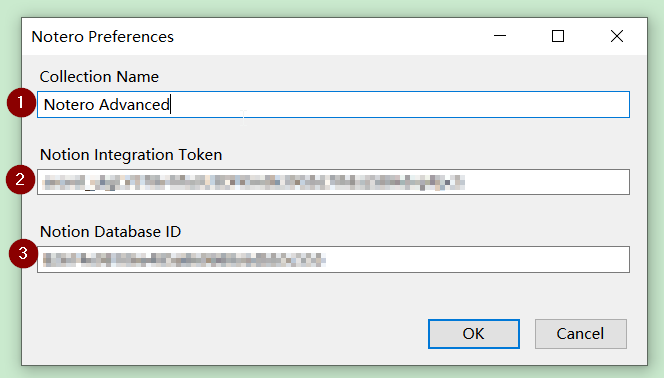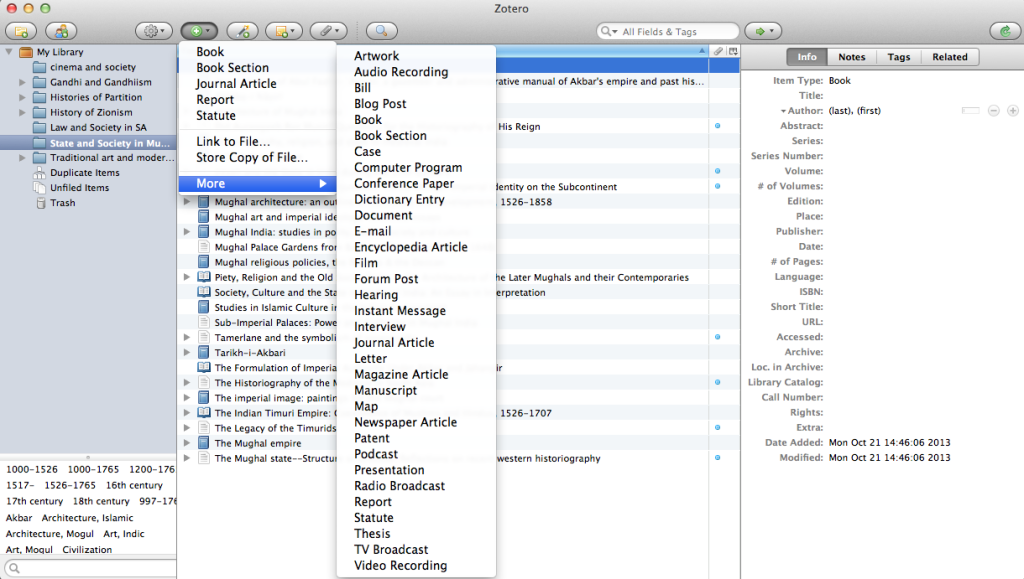

This, of course, takes time, but once one starts linking the pages within the app, magic starts to happen. Here is an example of how my page on Chinese history looks like, with subpages according to ruling dynasties, where I write whatever I feel is important to remember. They are not particularly organized or exhaustive (Sinologists will surely notice the missing lines in the list below), but they grow steadily and get better with time.
Notion and zotero how to#
This collection is much more chaotic and has notes on any possible topics I am interested in, including programming tips, instructions on how to write a cover letter and, of course, all the notes on China I feel are important to preserve.


The second type of entries I have is a wiki: that is, a collection of notes arranged by topic rather than the source. Each entry is associated with a Notion subpage that has my short summary of a book or an article. The table below shows a similar table I keep in English: here too I chose to mark authors, topics, and types of materials. The picture below is a snapshot of a table I created for primary sources I am interested in: for each page with notes I did about a source text I chose to add columns with information on authors and editors, a rough period of creation, and tags that in most cases reflect the genre of the primary source. These databases are essentially tables that contain links to user-created pages filled with notes, and columns with additional information and tags that allow sorting and filtering. The first one is several databases with notes for source books, secondary literature, historical figures and terminology. There are two main parts to the system I created. In this post, I will give a short guide to it in case you find it useful for your own work. The most important part of it all was creating and maintaining my personal knowledge base that contains notes on all things I find useful for my research. To give you an idea of how heavily I rely on it, see the screenshot of the list of most used pages in my account:
Notion and zotero code#
Notion is a multitool that can turn into a to-do list, a kanban board, a database, and even a personal webpage – all of which can be quite intimidating.Īnd yet, I have abandoned every single other app and keep sticking to this one: I manage several projects with multiple participants in it I use it for tracking bugs in my code to write down first drafts of my papers or again to manage courses I teach, etc. There is, of course, a certain learning curve involved, and one has to gain familiarity with the design choices made by the developers. Notion is an app that offers extremely flexible organization of user content, which can in most cases be achieved by dragging and dropping things around. Our hopes to exhaust all learning within one lifetime are long gone – and are replaced by the hopes to at least manage knowledge related to a single domain.Įvery person has a different system to do so – as demonstrated in many of the previous posts in Digital Orientalist – and I have created mine with the help of Notion. Since then, we have lost many but produced incomparably more texts. A person raises a foot and walks down the road of learning, and yet, even when one’s hair turns white, one will not have exhausted everything” complained a sixth-century Chinese prince Xiao Yi 蕭繹 about having too many texts to read as he was compiling the Jinlouzi 金樓子 treatise (Tian, 132). The texts of old pile up high, with more texts being produced ceaselessly. “Nowadays, each family produces writings, and every person has a collection.


 0 kommentar(er)
0 kommentar(er)
